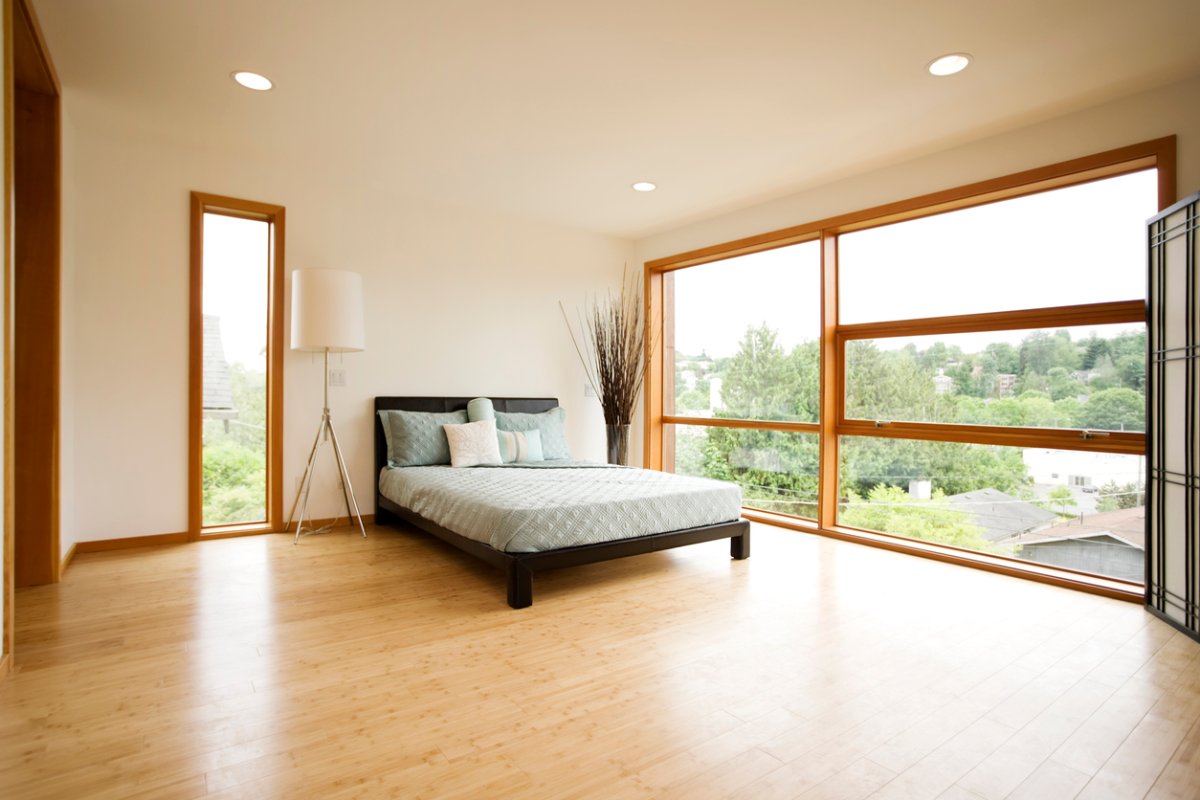We may earn revenue from the products available on this page and participate in affiliate programs. Learn More ›
60% to 70% of the homes in the U.S. contain carpeting made from nylon, polyester, or vinyl—materials dependent on non-renewable fossil fuels. The interest in environmentally friendly floors is growing as people learn about deforestation, air quality, growing landfills, and other issues. Whether you’re a core green consumer, interested in health issues, or just looking for great products at a good price, homeowners can discover many eco-friendly flooring possibilities.
Types of Eco-Friendly Floor Materials
Consider one of the following options for their relatively light environmentally impact:
Bamboo
Bamboo is the king of green building and design materials. Though bearing physical similarities to hardwoods, it is actually a tropical grass. And while hardwoods can take 25 to 125 years to fully mature, bamboo only takes 3 to 5. Usually, bamboo receives a 1350 rating on the Janka hardness test, a rating similar to red or white oak, but some manufacturing techniques can weave bamboo to a rating of nearly 3000—more than rock maple, hickory, or Brazilian cherry. Conveniently, bamboo can take a wide range of low-VOC stains and sealers, which makes it easy to integrate into any decor.
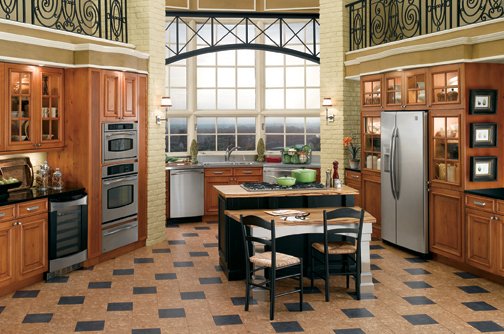
Cork
Cork flooring is made from stripping the bark of cork oak evergreen trees. Since the bark replenishes itself every 8 to 10 years, cork flooring is a sustainable option. Some cork flooring manufacturers have raised the material’s ‘green’ quotient by creating products from post-industrial recycled materials, such as scraps from wine-stopper production.
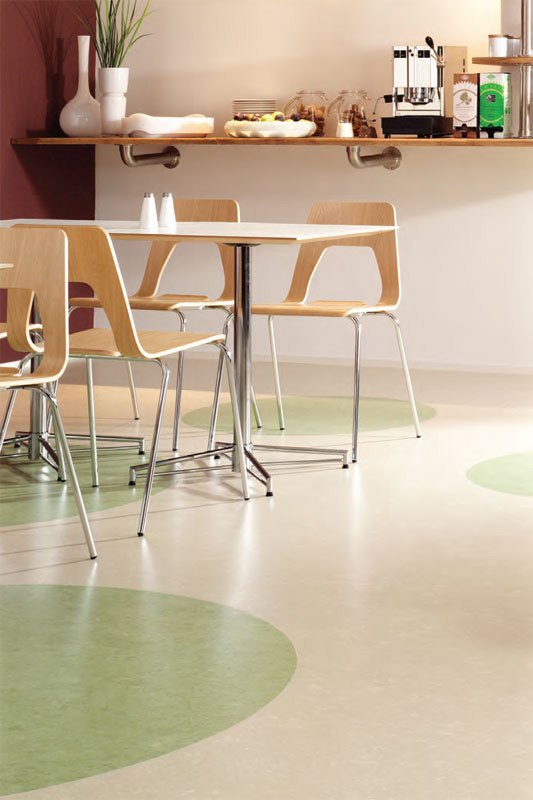
Linoleum
Linoleum is a tile made from natural linseed oil mixed with wood fillers and resins. While most “linoleum” has been replaced on the market by PVC-based products, there are lots of high-quality, green-certified linoleums out there, which are 100% biodegradable and whose production releases zero toxins. Real linoleum, properly installed, is extremely durable and excellent for those who suffer from asthma or allergies. Though it may evoke images of school classrooms, hospitals, and bad 70s kitchens, there are a surprising number of attractive linoleum solutions available.
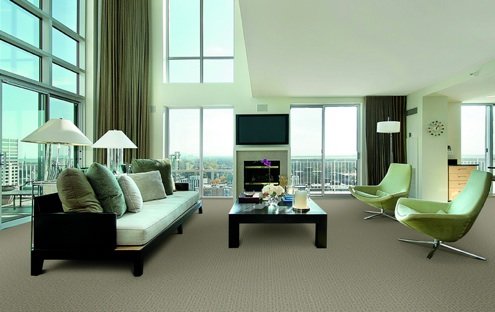
Natural Carpeting
100% wool carpet is another sustainable option. Your best bet might be New Zealand sheep’s wool. According to the company Just Shorn, wool carpeting is actually more stain-resistant than synthetic fibers. The high-quality wool’s natural resistance to liquids allows you more “time to act as spills stay on top of the pile longer, rather than seeping into the base of the pile and backing.” As a result of selective breeding, New Zealand wool is “the whitest and purest in the world, which means it has excellent dyeing characteristics. The results are carpets of remarkable hues and pastel colors.”
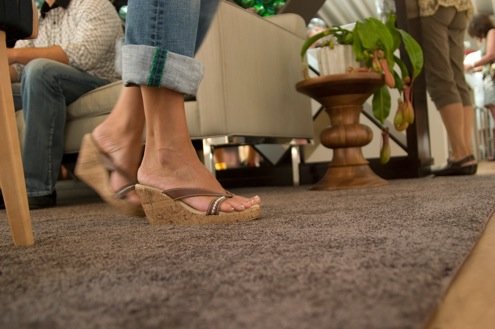
Renewable Fiber Carpeting
Renewable fiber carpets are LEED-certified options made from corn fibers. They are soft, strong, and quite stain-resistant. This type of carpeting can be easily cleaned with just water, eliminating the need for additional cleansers that contain harsh chemicals.
Why Choose Eco-Friendly Flooring
Many factors figure into the idea of green flooring. First is the growing amount of waste going to landfills.
“There’s also the issue of indoor air quality,” Lewis Buchner, CEO of EcoTimber in San Rafael, CA.”Remember the fiasco surrounding formaldehyde emissions in the FEMA trailers housing victims of Hurricane Katrina? Most of those emissions came from the adhesives used to bind wood products together. These adhesives are also found in many engineered wood flooring product.”
Those looking at hardwood or engineered wood floors have additional concerns. “First, there is an increasing awareness today of the destruction of the world’s forests,” says Buchner. “Forests hold the vast majority of Earth’s plant and animal life. The destruction of forests is the second-largest cause of carbon emissions worldwide—more than all cars, trucks, boats and planes combined. People want to do the right thing and don’t want their flooring decision to add to this destruction.”
